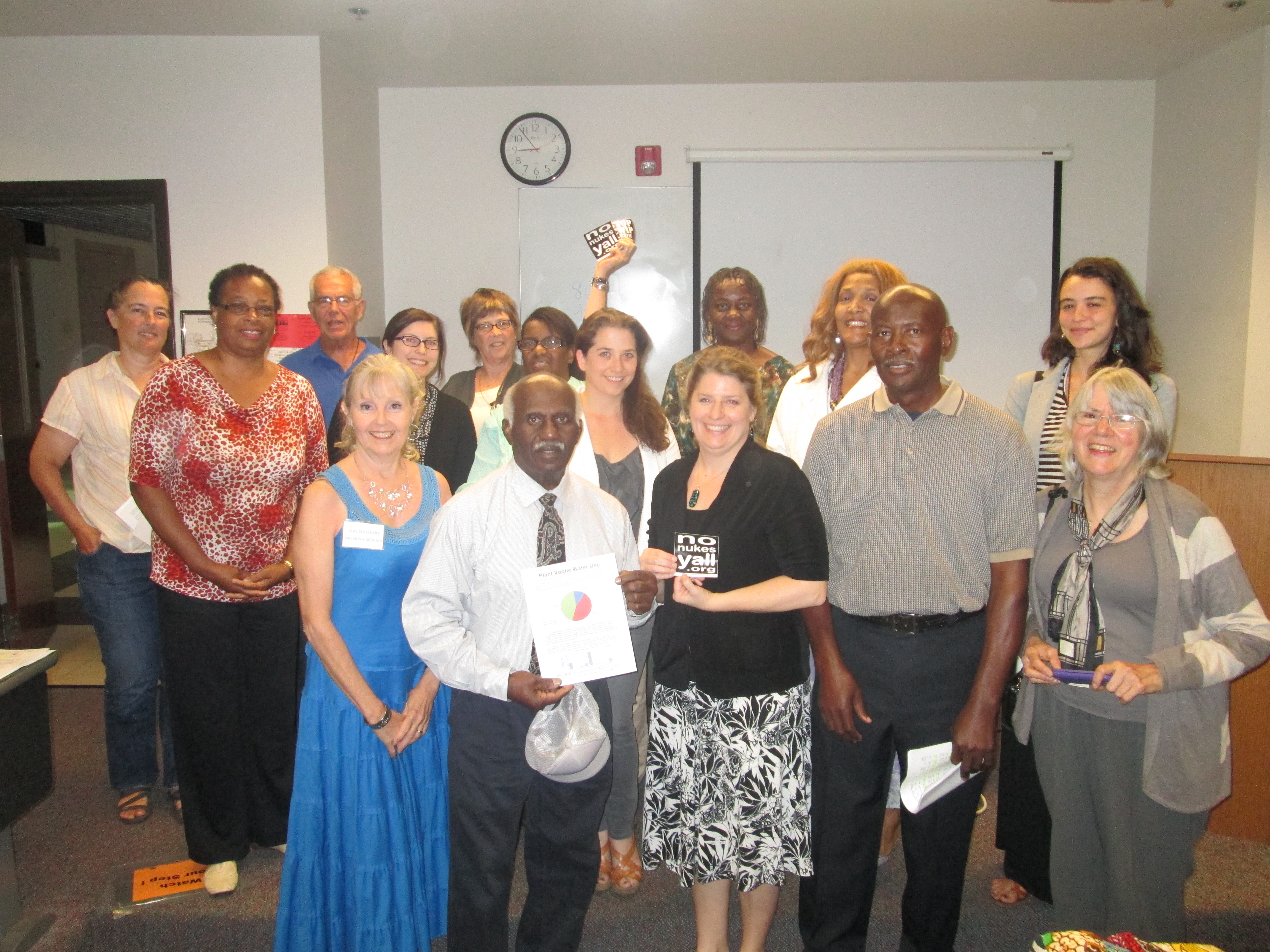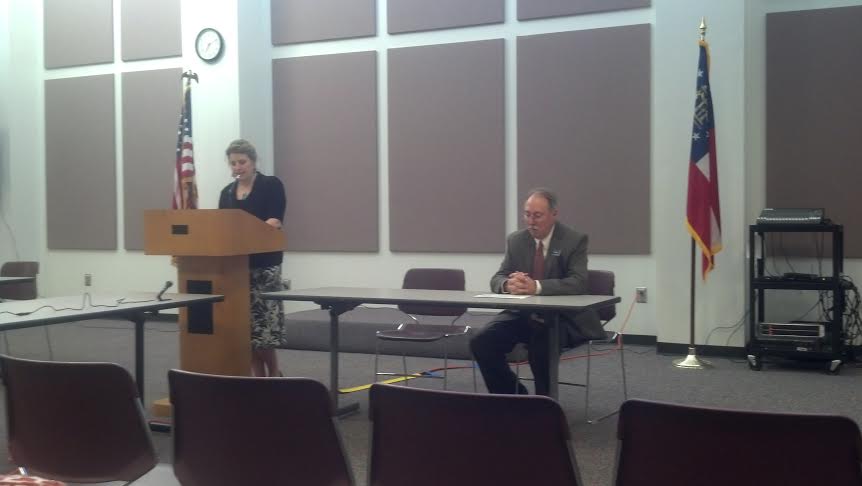Georgia Power Seeks EPD Approval to Further Drain Savannah River
(APN) WAYNESBORO — The Georgia Environmental Protection Division (EPD) is debating a request from Southern Company for the rights to take 74 million gallons of water per day from the Savannah River to cool two new nuclear reactors that Georgia Power is currently constructing at Plant Vogtle near Waynesboro, Georgia.
The decision stands to have a major impact on the future of the Vogtle Units 3 and 4, which cannot operate without water to cool them.
The health of the Savannah River, which supplies drinking water to 1.4 million people, provides a home for aquatic life, and supports Georgia industries and agriculture, also hangs in the balance.
“Power plants have a tremendous impact on our water resources. Less water used for power generation translates into more water for other life-dependent or life-enhancing uses in Georgia and the region,” Sara Barczak, High Risk Energy Program Director at Southern Alliance for Clean Energy (SACE), told the EPD in her May 08, 2014 testimony.
“Thus, our future energy choices will make a big difference on the future of our communities and businesses reliant on those water sources. Decisions made today will have ramifications for many future generations.”
The massive water withdrawals will burden the already struggling Savannah River, which has seen declining flow rates in recent years. In fact, 2012 saw the lowest flow in the Savannah River in over five decades.
Atlanta Progressive News reviewed the Draft Environmental Impact Statement for Plant Vogtle, over 600 pages, in 2007 and 2008.
APN found at the time that the proposed Plant Vogtle Units 3 and 4 would consume 1.76 cubic metres per second, on average, amounting to between 0.7 and 1.7 percent of the total river per year. This would be over 55 million cubic metres per year, according to APN’s calculations, confirmed by the U.S. Nuclear Regulatory Commission at the time.
Although rain will replenish the river, the NRC estimates “the resulting decrease in river stage… would be… 5 cm. at Drought Level 3 conditions and… 2.5 cm. under average discharge conditions,” each year.
In addition, the plants would also consume 623 gallons per minute on average, from two aquifers, according to the draft EIS.
One aquifer has already lost 4.6 metres of water since Vogtle Units 1 and 2 began operation in 1987.
“Drawdown” as a result of Units 3 and 4 would be 2.1 metres after 30 years of normal operation, the draft EIS report stated.
However, the NRC concluded that the drawdown of the river was perfectly acceptable. “These incremental drawdown levels are small in comparison to the 120 metres” in the aquifer, the Draft EIS concluded.
In addition, as the effects of climate change continue to impact Georgia, low flow, drought and saltwater intrusion from the Atlantic Ocean will become of increasing concern.
The National Climate Assessment, produced by hundreds of expert scientists under federal guidance, was released earlier this month. It reports that “The Southeast is ‘exceptionally vulnerable’ to sea level rise, extreme heat events, hurricanes, and a decreasing freshwater supply.”
The permit does not include a contingency plan for drought, low flow, or continuing effects of climate change.
Several environmental organizations requested a public hearing on the currently proposed EPD permit. EPD held the hearing on May 08 at Augusta Technical College in Waynesboro.
Local residents, preachers, environmental groups, homeowners associations, and business interests spoke during the hearing, with a majority against the water withdrawals for various reasons.
“In spite of the difficulty for many to get to Waynesboro, the turnout was really good and we appreciated that EPD listened and granted a hearing. However, it was disappointing that they didn’t hold additional hearings in Savannah and also upstream near Lake Hartwell, given those are also impacted communities.” Barczak told APN, noting that the location provided easy access to Vogtle boosters but not all affected communities.
Barczak also said in her public comments that the EPD provided an incorrect address for the hearing on their public notices and failed to change it even after requests from SACE.
Among concerns raised by the community are the fact that Vogtle is not needed to meet Georgia’s energy needs; the lack of planning for drought or the continued effects of climate change; the health impact on local communities; and the strain on relations with South Carolina.
“This is a huge request and we know the Plant is not needed, and so it’s actually pretty exciting to be able to present this to EPD,” Glenn Carroll, Coordinator of Nuclear Watch South, told APN.
The Official Code of Georgia states, “The division shall take into consideration the extent to which any withdrawals, diversions, or impoundments are reasonably necessary, in the judgment of the director, to meet the applicant’s needs and shall grant a permit which shall meet those reasonable needs; provided, however, that the granting of such permit shall not have unreasonably adverse effects upon other water uses in the area, including but not limited to public use, farm use, and potential as well as present use.”
In 2007, a local farmer, Doug Rhodes, told the NRC that local farmers are having to dig deeper wells for irrigation, due to the water depletion that is already occurring from Vogtle Units 1 and 2.
However, the NRC told APN at the time that they had not interviewed Rhodes or any other farmers, despite Rhodes’s testimony at the NRC hearing.
The NRC concluded the impact of Vogtle Units 3 and 4 would be low, despite the drawdown of the river, saying that a user of the resource would not be able to detect a change. However, they appear to have only been able to reach this conclusion by ignoring Rhodes’s testimony.
“The expansion of Plant Vogtle is not needed. Recent growth in power demand and projected future demand is low for the state and the region. Southern Company already has more than 40 percent surplus capacity, one of the highest overcapacity levels in the nation. The fact that EPD has complacently condoned billions of dollars to be taken from Georgia ratepayers for ongoing construction [of the project] without requisite water withdrawal and discharge permits constitutes and unpardonable failure to perform EPD’s responsibilities,” Steve Willis, with the Center for a Sustainable Coast, said.
The river drawdown also stands to affect the health of local residents. Lower flows, paired with toxic discharges from area industrial plants and radioactive discharges from Vogtle, mean increased levels of contaminants in the water, threatening subsistence fishermen and others who depend on the Savannah for food and water.
An increase in toxins coupled with the fact that the State of Georgia has not had a robust radiological monitoring program for over a decade has left local community members concerned about adding two more plants.
“I’m a resident of Burke County. I am one of hundreds of residents who live there and drink polluted water and eat polluted plants every day,” Bernice Johnson Howard, with Georgia Women’s Action for New Directions, said during the hearing.
“I look at this area as an inheritance from the people who have lived here for generations. If you destroy the water and the land, you’re effectively destroying the inheritance of people who have lived here for hundreds and hundreds of years. If we let Georgia Power do more pollution without finding out what the levels are already here, that we’re all being irresponsible.”
The project is also taking a toll on Georgia-South Carolina relations.
“We have run out of water and that’s been very clear for the last couple of years. The problem that we’re dealing with right now is that this permit will affect South Carolina relations. South Carolina DHEC (Department of Health and Environmental Control) submitted comments that said just that,” Tonya Bonitatibus, of Savannah Riverkeeper, said.
“This is an economic driver for Georgia to take away from South Carolina. Right now South Carolina has ten percent of the assimilative capacity to pollute and to make money off of this river. Georgia’s using the lion’s share of that. It’s irresponsible to move forward with a permit without negotiating those terms,” she said.
The EPD plans to respond to the public’s written and oral comments. The timeline for their decision on the permit is unclear. If Georgia Power crosses this hurdle, they will then need a discharge permit for water and waste going into the Savannah.
“If EPD issues a permit it opens itself to a lawsuit. We have already seen there are groups capable of taking on a lawsuit. Even if a permit is issued, this is a vital mechanism that could be used to keep us from going further down this dead-end path to a boondoggle water hog,” Carroll told APN.
No groups have currently expressed plans for a legal case. However, the Blue Ridge Environmental Defense League (BREDL) may be laying the groundwork.
In a six-page letter they sent to the EPD on May 15, 2014, the last day for public comment, BREDL charged that the state water withdrawal permit for Plant Vogtle would violate the law and that it should not be issued.
The League detailed two fatal flaws: 1) the permit would violate water quality criteria and the anti-degradation requirement of the Clean Water Act and 2) the permit would violate federal regulation that prohibits in-stream treatment of pollution.
Other permit flaws identified by the League include allowing the entire river to be a mixing zone for pollution, the failure to assess the impact of low flow and relying on monthly averages, the failure to account for the length and severity of droughts, the failure to consider greater water supply demands caused by population growth and the impact on economic development, and the failure to properly account for the amount of additional to be water withdrawn from the Savannah River.
(END/2014)

